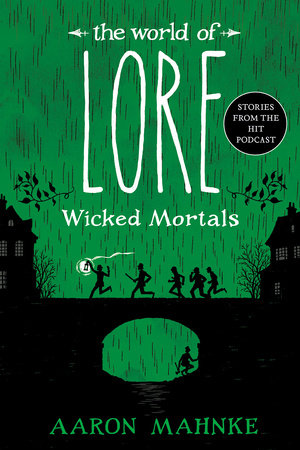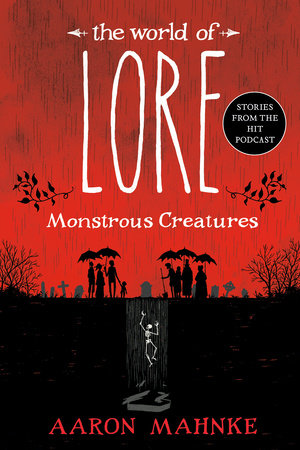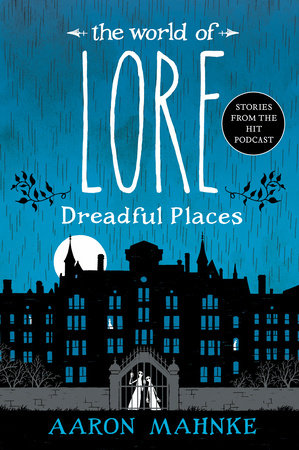Excerpt
The World of Lore: Wicked Mortals
The Castle On January 17, 1894, a couple stood before a minister at the Vendome Hotel in Denver, Colorado. Henry Howard and Georgianna Yoke were about to be married. Standing near them was their witness, a woman named Minnie Williams. The bride had come from Indiana to escape a scandalous reputation, and had found work in Chicago at a store owned by Henry. She was a tall, slender woman, about twenty-five years of age, with blue eyes and blond hair. And she was madly in love with Henry.
It sounds wonderful. It sounds perfect, actually. But there was trouble in paradise even before they met the minister there at the hotel.
You see, Henry was already married. He was, in fact, married to
two other women. And Minnie, the woman standing as witness, was actually Henry’s mistress of over a year. Even Henry’s name was fake; his real name had been abandoned long before, and it would be months before Georgianna would discover who he really was.
Sometimes we think we know a person, only to discover that we were fooled. Community is built on trust, and that trust allows each of us to make connections, to let down our guard, and to feel safe. When that trust is broken, though, our minds quickly shift to disappointment and stress and outright fear.
Sure, it happens less often now in the age of Facebook and social media. But in the late 1800s, very little stood in the way of a person falsifying their identity, and Henry Howard—or whoever he was prior to that moment in Denver—had turned that skill into an art. Few people knew this about Henry, though. In fact, few people could have imagined what deep, dark secrets boiled just beneath the surface of this smiling young groom. And when the world finally
did find out exactly ten months later, they could barely contain their horror.
Warning Signs
Henry Howard was born in New Hampshire in 1861 as Herman Mudgett. His parents were wealthy, well-respected people in their community, and their son was born into that privilege. But from an early age, Herman was a problem child, constantly getting into trouble.
According to Mudgett himself, as a child his classmates forced him to view and touch a human skeleton after learning that he was afraid of the town doctor. Their prank backfired, though, generating a deep fascination rather than frightening him off. And that obsession with death would only grow.
Soon the boy was expressing interest in medicine. One report claims that he would actually perform surgery on animals. Along with his excellent performance in school, he was able to pursue that interest and enter medical school, enrolling at the University of Michigan as H. H. Holmes in 1879. Far from home, and with access to resources that he previously lacked, college allowed Holmes to get creative.
He devised an easy way to make money—a drive that would fuel many of his future crimes. It involved stealing a cadaver from the medical lab. Holmes would disfigure the corpse and plant the body somewhere that gave it the appearance of being the victim of a tragic accident. Then, a few days later, he would approach a life insurance company with a policy for his “deceased relative” and collect the cash.
His final insurance swindle in Michigan netted him $12,500, but he knew his welcome was wearing thin. After collecting the money, he vanished, abandoning school and his new wife, Clara, and child, who never saw him again.
He moved around the country doing legitimate work, but also learning his way around the business world. He mastered the art of buying product on credit, avoiding the bills, selling the items, and then vanishing with the profit. Armed with that skill, he soon settled in Englewood, just south of Chicago.
It was 1885. Holmes was trying to avoid creditors from all around the country. But rather than vanish into obscurity, he chose to hide in plain sight. He married his second wife— bigamously, of course—and took a job at a local drugstore owned and run by Dr. Elizabeth Holden, whose husband was dying of cancer.
Holmes spent the next two years becoming more and more essential to Holden’s business, paying her for ownership in the business and building relationships with the customers. When Mr. Holden finally did pass away, the payments from Holmes stopped, and Dr. Holden became upset, threatening to end their business partnership.
But nothing happened—because Dr. Holden mysteriously vanished. When asked about her disappearance, Holmes told the authorities that she had moved out west to live with family, right after she had signed over the business to him, of course. And the police bought the lie.
Holmes operated the drugstore as if nothing had happened, growing the business and continuing his chess game of evading creditors. But when the empty lot across the street became available, he couldn’t resist the temptation. Holmes, you see, had bigger plans. The World’s Columbian Exposition was scheduled to be hosted in Chicago in 1893, and he envisioned a hotel that could house the countless visitors who would travel to the area.
His project was lovingly called the Castle, which wasn’t far from the truth. It was 50 feet wide and more than 160 feet long, taking up half of a city block. With three stories and a basement, it would eventually have over a hundred rooms within its walls.
And Holmes, ever the micromanager, took on the task of project architect, refusing to share the plans with anyone else.
Workers on the building asked questions, naturally, but when they did, Holmes would replace them. Most of the men working on the project never lasted for more than two weeks. All told, more than five hundred carpenters and craftsmen worked on the Castle. True to form, Holmes managed to avoid paying most of them as well. He would accuse them of shoddy work and refuse to give them their wages. Some sued him, but he managed to put those cases off long enough that they eventually gave up.
Once the new building was completed, Holmes moved the drugstore to its ground floor and rented out space to other shops.
His personal offices were located on the top floor, and the remaining space was rented out as temporary living quarters, marketed as a boardinghouse for young, single women.
The Castle was open for business. Unfortunately, not everyone who stayed there managed to survive the hospitality that Holmes offered them.
Gone Girls
When Mrs. Pansy Lee arrived from New Orleans, she rented a room at the Castle. She was a widow and had traveled all over the United States before arriving in Chicago to settle down. When Holmes learned that she had $4,000 in cash in the false bottom of her trunk, he kindly offered to keep it in his store vault for her. Mrs. Lee declined the offer, and vanished a short time later.
While some people came to the Castle for lodging, others were looking for work. One of the requirements that Holmes imposed was that all his employees were to have life insurance policies for the sum of $5,000. Holmes, remember, knew the life insurance business well.
When seventeen-year-old Jennie Thompson arrived from southern Illinois looking for work, Holmes saw an opportunity. She was young and pretty—the exact sort of blond-haired, blue- eyed beauty that he preferred—and he quickly gave her a job.
In casual conversation Jennie let it slip that her family didn’t actually know where she was. She had told them she was traveling to New York, but the offer of a good job was enough to keep her right there in Chicago. She told Holmes that she couldn’t wait to tell her parents about her good fortune. Before she did, though, he escorted her up to her room, and she was never seen again.
In 1890, Ned Connor arrived at the Castle looking for work. He traveled with his wife, Julia—unusually tall for a woman at nearly six feet—and their young daughter, Pearl. Ned was a watchmaker and jeweler, and Holmes hired him right away. But it was Ned’s wife who captured his attention the most.
Holmes soon fired his bookkeeper and gave the job to Julia. Not long after, it began to be obvious that Holmes was more than a little friendly with Ned’s wife. Ned, for his part, turned a blind eye. It seems he was glad to have a good job with steady pay and a roof over his head.
When Julia became pregnant, though, Ned took the hint. He packed up, filed for divorce, and left her and Pearl in the care of Holmes, who immediately took out insurance policies on both of them. But Holmes had a new problem: Julia knew the business
too well, and she presented a threat to his illicit activities.
Holmes found a solution. He told Julia that he would marry her, but only if she would have an abortion. Julia resisted at first, but finally, on December 24, 1891, she gave in. She asked Holmes to put Pearl to bed, and then he led her to the basement, where he had a makeshift operating room.
Julia and Pearl were never seen again.






